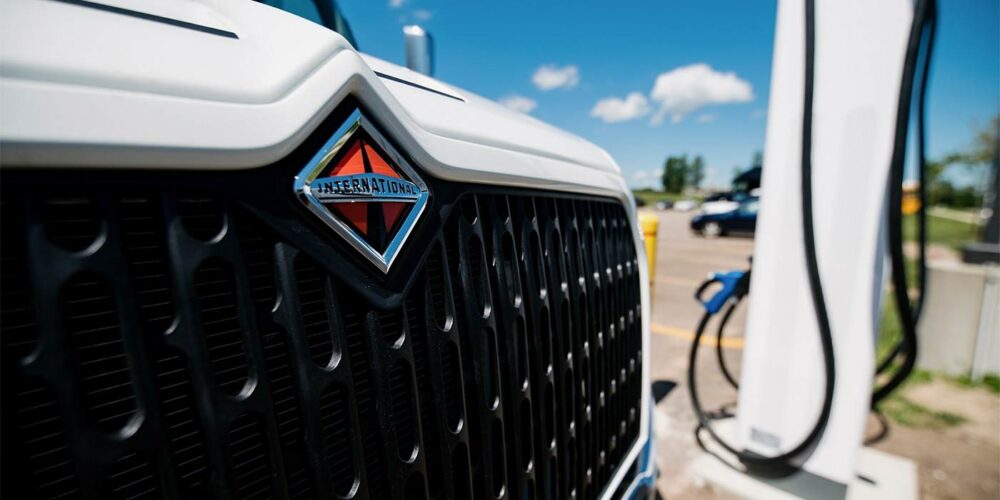The COVID-19 pandemic turned on its head the way people look at trucking fleets and drivers. The world finally saw them through the lens of front-line heroes making sure deliveries of critical supplies arrived at hospitals and grocery stores. And later, when the first vaccines became available, truck drivers made sure they arrived at the right distribution points. But as the pandemic continued and supply chains remained clogged, drivers faced numerous challenges: a lack of safe, accessible parking, long wait times at ports, distribution centers and warehouses, extra long hours on the roads, and more.
With so many moving parts, it will certainly take time for the supply chain to stabilize. The road into 2022 remains bumpy for trucking companies and their drivers. However, there are some potential solutions and technological advancements that can help fleets meet these challenges head-on.
Here are a few critical areas drawing the attention of industry experts.
Improving driver experiences
Ranking among the top concerns for commercial drivers in this year’s annual ATRI Top Industry Issues report—driver experiences. To attract and retain highly-qualified drivers, trucking companies must prioritize improving the driver experience next year. Doing so, however, requires more than simply increasing pay and benefits and offering sign-on bonuses.
Improving retention rates and recruitment efforts must include a critical element: optimizing drivers’ workflows on the road, which makes the drivers’ jobs easier, not harder. An effective strategy for trucking companies to both increase efficiency and ensure a less stressful, more seamless experience for their drivers includes introducing AI-powered driver workflows and fleet management and route optimization software.
Improving driver parking
Last year, ATRI’s list of industry issues listed truck parking as a major concern. A joint research initiative between ATRI and the OOIDA Foundation found 44% of respondents ranked truck parking as “much harder” or “somewhat harder” to find during the pandemic. The challenge to find safe, legal parking continues to affect truck drivers’ pay and efficiency. The ATA says drivers lose nearly an hour each day of their allowable drive time by parking early at an available spot rather than risk not finding appropriate parking.
Only about 313,000 trucking spaces are available to accommodate over 3 million truck drivers in the U.S. The shortage has impacted the trucking industry for decades, costing drivers an average of $5,500 or 12% of their pay each year. Pennsylvania’s Turnpike Commission, which began developing strategies to address the parking shortage a few years ago, has already spent $29 million to improve the six worst service stations. Its new Truck Parking Information Management System (TPIMS) will provide drivers with information about parking capacity.
Resolving detention and facility delays
To put it into perspective, all the East Coast ports—Baltimore, Charleston, Newark, New York, Philadelphia, Savannah and Virginia—combined move less freight than the Port of Los Angeles. About 36% of US imports come through the ports of LA and Long Beach, where right now ships remain at sea, waiting an average of 14 days to dock.
Before the pandemic, the ports set up something of a relay race. Large container ships docked and cranes unloaded and hoisted containers onto trains or waiting trucks. Few ports besides those in California have the infrastructure to handle these gigantic ships, so the system became more concentrated with everyone — port operators, longshoremen, rail companies, trucking companies and truck drivers — working in coordination.
The pandemic created a perfect storm as people, unable to spend money on experiences, shifted their spending to consumer products. The system simply couldn’t adapt that quickly. There weren’t enough truck drivers available, initially. Containers sat at the docks. Ships couldn’t unload before those containers were cleared out. This incredible increase in demand threw the system completely off-kilter.
Another challenge still facing ports is a shortage of chassis. It’s an issue faced by ports across the country with the exception of the Port of Virginia, which owns and operates its own chassis fleet and container yards. In 2007, the port created its own chassis pool which numbers 16,000 chassis available for rent. Trucks need these chassis to transport their containers. This chassis shortage holds drivers up, too.
Port congestion — offloading, staging and moving containers out of the port — will remain steadfast through 2022 and potentially into 2023. A new domestic pilot program was recently introduced to help speed up the process. A few ports have extended their gate hours, and Congress recently passed its infrastructure bill, which includes $17 billion to improve, build and update port infrastructure and waterways.
Supply chain delays and the driver shortage continue to frustrate current truck drivers. Inaccurate or delayed delivery times and stalled routes typically timed to the minute continue to bleed time and money away from the drivers.
The fleet and trucking companies incorporating automation and predictive analysis into next year’s planning provide drivers with yet another tool to prepare for potential delays and dispatchers to more effectively optimize routes.
Incorporating automation and AI
The future of trucking includes automation and AI, but not just autonomous trucks. The logistics and freight transportation industries will always need drivers. Machine learning, automation and AI can, however, improve efficiency and remove (or at least decrease) pain points.
In 2022, fleets will continue prioritizing automation and AI advancements within real-time route optimization software. Incorporating historical and predictive analysis into fleet management software will help planners and dispatchers develop more efficient, intelligent plans and routes with real-time data on variables like:
- Stop times;
- Real-time traffic and weather;
- Accident prevention, critical events, and safety; and
- Fuel efficiency.
Automation and AI will help fleets and trucking companies answer the question, “How do we realistically keep pace with ever-growing demand?” Both in-truck and dispatch solutions can use AI, whether it’s to build better routes or predict the best times to schedule deliveries. Route optimization software, strengthened by AI advancements, has the power to provide fleets with more knowledge and efficiency gains.
Prioritizing tech education for truck drivers and fleet managers
Implementing the right route optimization and productivity-boosting driver workflow apps, fleet management platforms, and integrated in-app messaging and online document imaging features remains just one step in supporting truck drivers and fleet managers.
Larger fleets will focus more on professional development and technology education in 2022 and beyond. Skipping or only spending limited time on driver and manager training harms those who use these tools. Fleets should consider using mobile technology to make it easier for drivers to access training resources at a time and place of their choosing. For example, drivers can often use their fleet’s mobile devices or cloud-based web portals to access their company’s learning management system (LMS) to quickly access key resources.
Regardless of the training approach, companies must make time to up-skill and empower their employees to understand and use workflow and route optimization technologies. This approach expands everyone’s ability to leverage productivity gains provided by these software tools. New technology increases efficiency and productivity—and ultimately fleet and trucking companies’ bottom lines.














